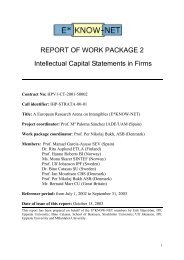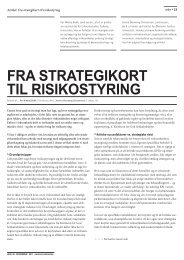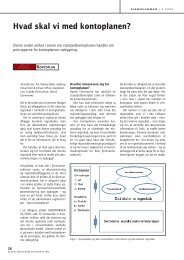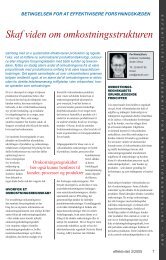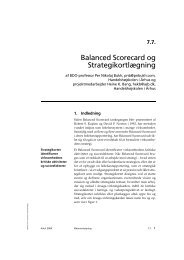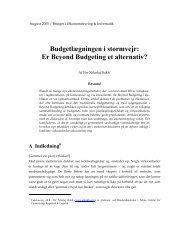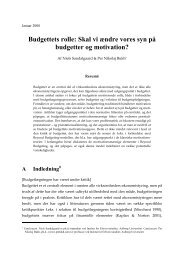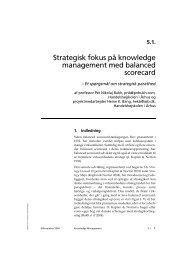guidelines for managing and reporting on intangibles (intellectual
guidelines for managing and reporting on intangibles (intellectual
guidelines for managing and reporting on intangibles (intellectual
Create successful ePaper yourself
Turn your PDF publications into a flip-book with our unique Google optimized e-Paper software.
Figure 4. A breakdown of <strong>intangibles</strong> – a sec<strong>on</strong>d example.<br />
Strategic<br />
Objective<br />
Increase Market Share<br />
Critical<br />
Intangibles<br />
Mantain <str<strong>on</strong>g>and</str<strong>on</strong>g> attract<br />
key employees<br />
Innovative<br />
capacity<br />
Customer<br />
approach<br />
Intangible resources<br />
to create or develop<br />
Flexibility<br />
Flexibility<br />
Flexibility<br />
Intangible activities<br />
to improve resources<br />
Increase<br />
job rotati<strong>on</strong><br />
Increase codified<br />
routines<br />
Develop a set of<br />
customer profiles<br />
Intangible activities<br />
to assess results<br />
Employee<br />
Survey<br />
Check use of<br />
codified routines<br />
Customer<br />
Survey<br />
4.2. Phase 2. Measurement<br />
1.<br />
2.<br />
3.<br />
4.<br />
5.<br />
6.<br />
7.<br />
Once the critical <strong>intangibles</strong> have been identified <str<strong>on</strong>g>and</str<strong>on</strong>g> the causal network of relati<strong>on</strong>s<br />
has been established, the firm needs to define specific indicators that serve as a<br />
proxy measure <str<strong>on</strong>g>for</str<strong>on</strong>g> each intangible. Thus, a set of indicators is defined <str<strong>on</strong>g>and</str<strong>on</strong>g><br />
developed <str<strong>on</strong>g>for</str<strong>on</strong>g> each intangible.<br />
Companies may wish to check whether or not the indicators fulfill the<br />
characteristics summarized in Figure 5 below.<br />
An indicator is comparable if it is computed <str<strong>on</strong>g>and</str<strong>on</strong>g> presented following generally<br />
accepted criteria, so that users may make comparis<strong>on</strong>s over time <str<strong>on</strong>g>and</str<strong>on</strong>g> across<br />
companies.<br />
An indicator is reliable if the in<str<strong>on</strong>g>for</str<strong>on</strong>g>mati<strong>on</strong> it provided is trustworthy: It must be<br />
objective, truthful <str<strong>on</strong>g>and</str<strong>on</strong>g> verifiable.<br />
An indicator is objective if its value is not affected by any bias arising from the<br />
interests of the parties involved in the preparati<strong>on</strong> of the in<str<strong>on</strong>g>for</str<strong>on</strong>g>mati<strong>on</strong> disclosed by<br />
the firm.<br />
An indicator is truthful if the in<str<strong>on</strong>g>for</str<strong>on</strong>g>mati<strong>on</strong> it presents reflects the real situati<strong>on</strong> of the<br />
firm with respect to the issue it refers to.<br />
An indicator is verifiable if it is possible to assess the truthfulness of the<br />
in<str<strong>on</strong>g>for</str<strong>on</strong>g>mati<strong>on</strong> it provides.<br />
17



